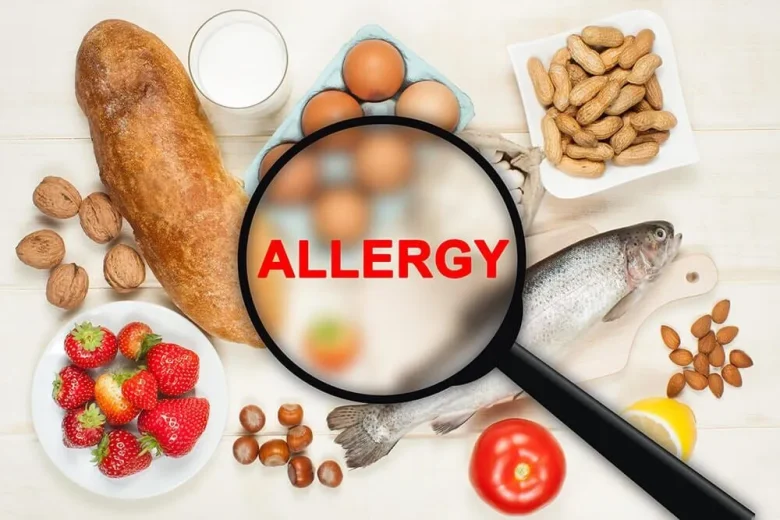Have you ever had dramatic tummy upsets, felt worn out, or even developed a rash after having a plate, or two, of pasta? Well, this could create a probability that you suffer from gluten intolerance. Given the number of food options as well as the number of people with gluten allergies, it now seems necessary to delve into gluten allergies even further. It doesn’t matter if you want to anger the gluten gods and how it will affect your body or you want to control the symptoms; read on because this guide will show you how to detect gluten sensitivity and how to effectively cope with the adverse effects of being on a gluten-free diet. Let’s start with what gluten is, and then we will proceed to what the disease coeliac and a real allergy are, what’s more, we’ll have some handy hints about wheat-free nutrition.
What is Gluten?
Gluten is a class of proteins found together with gliadin in wheat corn barley and rye. Apart from wheat, live yeast is added to the mixtures to produce bread so that the dough is elastic. Clouds of dust filled in the air, gluten shrouding even bigger scoops when water contained the flour. This framework has a mechanical structure that takes its shape during the cooking and/or baking of the food item.
Though many people can tolerate gluten, some have some intolerance or even an allergy to it. When gluten is taken in by some individuals, some uncomfortable symptoms might be experienced by them. Which begs the question ‘What is gluten?’ It is also important to note what gluten is so that if there are unexplained health issues, it could be investigated further as some of the causes. With the increase of awareness towards nutritional restrictions, it is important to understand how gluten, which is a simple carbohydrate, affects one’s health.
The Celiac Disease and the Gluten Allergy:
Celiac disease and gluten allergy are terms that are thrown complementarily yet they are not synonymous. Coeliac is classified as an auto-immune disease. This means that whenever a person with this disease eats gluten, their body attacks their intestine instead of digesting it. This, over time, can cause very serious problems with one’s health.
A gluten allergy is different in that there is no time lag because, in this case, it is not an autoimmune disease but an allergy a medical person will need to categorize. The symptoms can present immediately after eating gluten-containing foods; however, the intestines are not damaged as in the case of eczema disease.
Although both conditions call for gluten elimination, it is the celiac condition that requires more caution with food preparation to avoid cross-contamination because of possible adverse effects in later life. However, individuals suffering from real celiac disease would experience hives or even difficulty breathing within seconds of exposure without the intestinal repercussions. It is very important to know these distinctions to know how to manage and treat the condition effectively.
Typical Gluten-Induced Allergic Symptoms:
Symptoms related to gluten allergy are seen in most individuals and they may cause a lot of panic. Most of these symptoms will occur after intake of foods in which we have gluten, particularly wheat.
The most prominent of these symptoms are the gut issues. Digestive problems such as bloating, gas, diarrhea, and/or constipation portray gluten intolerance.
Skin reactions also play a significant role. Some digestive problems may be accompanied by skin reactions such as rashes, itching, and hives, and this could start even before the first 24 hours after eating gluten food products.
Fatigue is one more reason people commonly complain. Many people are quite normal but do not feel as energetic as one would expect from their daily experiences.
One may also experience headaches or even migraines in some instances. This is a commonly ignored symptom, especially since it tends to be observed after every meal but it should be checked to see if it is recurrent.
Of late, emotional feelings such as anxiety and depression have been reported. When discussing things like gluten allergy, the link that exists between the gut and the mind cannot be ignored.
How to Get Tested and Diagnosed with Gluten Allergy?
If one has reasons to believe that they might be suffering from celiac disease, the first step would, of course, be to contact a physician. This specialist will record your medical history as well as understand your symptoms. Blood tests are a good start, as they are often used for screening only. These tests try to detect the presence of antibodies specific to intolerances such as gluten. Before the test, it is important to stay on a diet inclusive of gluten; otherwise, the tests will be ineffective.
In some situations, doctors might use skin prick tests or patch tests to get a more accurate diagnosis, although those aren’t efficient when it comes to gluten intolerance. Others take endoscopy as the final procedure to verify the existence of a two-sided disease like celiac disease or a one-sided condition like gluten intolerance. This test trains doctors use this tests to view the stomach structures as well as handle specimens when required. Always communicate with your doctor concerning avails to recommend for them to adjust the right diagnosis measures needed according to the health status.
Controlling a Gluten-Free Diet:
Controlling a gluten-free diet can seem like an arduous process but is completely feasible with an appropriate strategy. Begin by understanding the foods that contain gluten. Wheat, barley, and rye are the main grains that contain gluten. Labels come in handy. Look for more dietary staples in ‘hidden form inside sauces, processed foods, and even in some medicines.’ Natural gluten in food materials such as fruits, vegetables, lean proteins, nuts, and legumes should be accumulated. Whole grains such as quinoa and brown rice are also good alternatives.
It can also be exciting to exercise cooking. Consider using seasonally available produce in your meal preparation. You can get gluten-free flours that enable you to bake or prepare meals without losing the taste of food. When going out for meals or attending social functions, tell people about what you can eat. Most restaurants nowadays have introduced gluten-free menus or will make gluten-free adjustments if informed before the actual event. Finding others willing to embrace this lifestyle can also be quite beneficial to your quest for healthy living.
What Food Ingredients are Gluten-Free?
Most people can be astonished that gluten is not only found in bread or Italian pastas; on the contrary, gluten is in hidden places too, which is the reason why it is advised to read the labels carefully.
Gluten is often used in processed foods to stabilize or enhance the thickness of the products. Foods that seem wheat-free, such as sauces, dressings, and soups, may still contain wheat-based items that are not labeled as such.
Snacks are another source of gluten intolerance. Chips, granola bars, and even some types of candy may contain gluten ingredients that are not readily apparent. Look for any mention of wheat or barley extracts in the labels before digging in.
Another concern that arises is cross-contamination. Even if a food item has no gluten in its list of ingredients, traces of gluten from other items may sometimes be found due to the use of common equipment.
Be careful with medicines or drugs and dietary supplements. Some types of pills are coated with gluten-free binders, which are indicated somewhere on the blueprint. Such sources, particularly non-apparent ones but still containing gluten, such as these hiding places, are dangerous for a person suffering from a gluten allergy.
Things That One Should Remember:
It is not easy to avoid gluten and gluten-containing products when one has a gluten allergy because all that a person would want to do is eat. First things first, let’s start with home. Prepare your pantry with gluten-free’s pantry essentials such as rice, quinoa, and other types of beans. Whenever you go out to eat and you are in doubt about the allergens found in a particular dish, feel free to enquire about it. There are increasing instances where gluten allergy-recognised restaurants have gluten-free foods.
Meal prep is and remains a given. It would be best to look ahead a week to plan your meals and avoid any hasty choices that might lead you to make less favourable ones. Make sure to cut up snacks and other food options ahead of time as well; nuts or your favorite energy bars can come in handy. Social situations can be nerve-wracking; remember to always tell your friends or family about your eating habits beforehand. Making or bringing something safe for you is a good way of making sure you will be able to enjoy a nice treat while other people will also be able to enjoy it.
Conclusion:
It cannot be denied that having a gluten allergy can be a nightmare. It is important to know what the symptoms are and to be able to cope with daily life situations. Being conscious is where the power comes from. If the symptoms are always caught early enough, these steps can be taken to shift to a better state. A great community is highly recommended. Finding friends who have been on the same journey as you have been is soothing and provides knowledge at the same time.
Trying gluten-free recipes helps in exploring new dimensions of cuisine. It helps that with imagination, it is not about deprivation but about comfortable pleasures. Awareness of constituents helps reduce risk during eating out or grocery shopping. Such awareness helps in making decisions about your specific preferences. With time, this practice can enhance the well-being of health and life. Every little action counts in building a better tomorrow full of hope.
FAQs:
1. What is gluten simply?
It is a protein present in wheat, barley, and rye. It allows the dough to hold its shape and even improves its rise.
2. How do I know if I have coeliac disease or a gluten allergy?
Coeliac disease is a condition of the body whereby the ingestion of gluten leads to an autoimmune reaction that degrades the intestine. Only a clinician can best delineate the two conditions via some tests.
3. Can the symptoms of gluten allergy suddenly come upon a patient?
The symptoms can and do develop spontaneously due to modification of dietary exposures. Or alterations in gut health.
4. Is there a treatment for allergies to gluten?
At this moment, there is a treatment available for gluten allergy. The optimal management for this is the total elimination of all gluten sources.
5. Is it safe to assume that all items marked “gluten-free” are safe?
Not really. Always look at the labels, as the items may not be safe due to cross-contamination.




